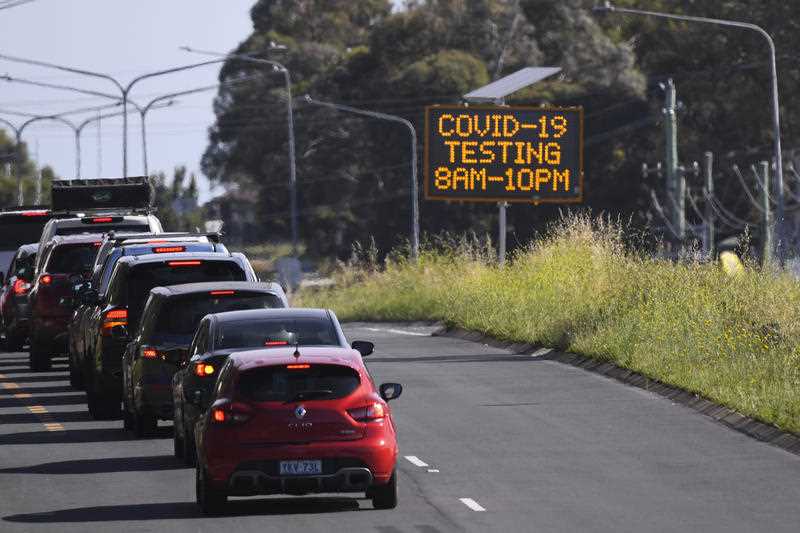Stricter lockdowns in response to COVID-19 led to higher loss in life satisfaction and worse mental health and wellbeing outcomes, new research from The Australian National University (ANU) shows.
Led by the ANU Centre for Social Research and Methods and using Oxford University’s COVID-19 Stringency Index, the study is the first in Australia to examine the direct links between lockdowns and life satisfaction for the entire COVID-19 period.
The study also found that higher case numbers and deaths caused by COVID-19 had a negative impact on people’s wellbeing, but to a lesser extent than lockdowns.
“Our study, which analysed the experiences of more than 6,500 adults from across Australia and over a period of two and a half years, shows the stricter the lockdown the higher the loss in life satisfaction,” co-author Professor Nicholas Biddle said.
“We kind of knew this intuitively. However, it is only by carefully quantifying the level of lockdown restrictions and linking these to a high-quality long-term survey that we are able to accurately capture the impacts and to think about the trade-offs society needed to make during the COVID-19 period, and may need to make again in the future.
“There is no doubt lockdowns were essential to helping stop the spread of COVID-19 and limit case numbers and potential deaths. These measures were designed to keep Australians safe, and they did.
“However, our findings also show that measures designed to help protect people from COVID-19 also have a clear impact on mental health and wellbeing.
“Whether this effect is long-lasting as we abandon strict lockdowns and adapt to ‘COVID normal’ remains to be seen.”
Study co-author Associate Professor Ben Edwards said there was also a clear connection between rising COVID-19 case numbers and lower life satisfaction.
“From our findings it’s clear that increases in policy stringency and increases in cases are both associated with a worsening in people’s wellbeing and also led to a pronounced increase in how lonely people felt,” Associate Professor Edwards said.
“However, the impact of strict lockdowns tended to be stronger and have more impact than an increase in COVID-19 case numbers.”
The study was also able to look at whether the impacts of lockdowns were the same for everyone in Australia. According to Professor Biddle, some important differences emerged.
“We found that for males, the strictness of lockdowns had a stronger impact on their life satisfaction. In contrast, among females rising case numbers seemed to be a bigger factor,” he said.
“We also found that COVID-19 policy stringency had a greater impact on young Australians compared to older Australians, and on those states and territories that had multiple waves of infections, namely New South Wales, Victoria and the ACT.”
The study builds on the first comprehensive tracking of the strictness of lockdowns across Australia’s capital cities as well as states and territories.
Based on the Oxford Stringency Index, the study looked at government policy responses across Australia to help reduce the spread of COVID-19, including school, workplace and public transport closures, cancellation of public events and restrictions on the size of gatherings, and restrictions on domestic and international travel.
“Between January 2020 and August 2022, Melbourne recorded the strictest lockdown, scoring 94.44 from a scale of 100 in August 2021,” Professor Biddle said.
“Melbourne also had the second strictest lockdown, 90.74, recording this three times – in April 2020, August 2020 and October 2021.
“Other cities, including Adelaide, Brisbane, Darwin and Sydney all had lockdowns that scored 90.74 for severity over the same period but not as frequently. Some states and territories also recorded the same score.
“What’s also clear is that since January 2022, lockdown measures across Australia have dramatically decreased in severity.”
Associate Professor Edwards said the new ANU study added extra important findings to earlier research by him and colleagues at Oxford University.
“In that study, published in June and comparing policy responses across Australia, we found Victorians had to live under the most stringent COVID-19 responses,” he said.
“In addition, residents of the cities of Melbourne and Sydney, and to a lesser extent the states of New South Wales and Victoria, endured significantly more days living under stay-at-home orders, remote learning and workplace closures when compared with all other Australian cities, states and territories.
“However, we also found Victorians were less compliant compared to those in other jurisdictions with less stringent policy settings.”
Read the full study on the impact of lockdowns on Australians’ life satisfaction online. The COVID-19 stringency data and the survey data from the ANU Centre for Social Research and Methods COVID-19 Impact Monitoring Survey series are available to download from the Australian Data Archive.
Get the latest news, sport, entertainment, lifestyle, competitions and more delivered straight to your inbox with the Canberra Daily Daily Newsletter. Sign up here.



